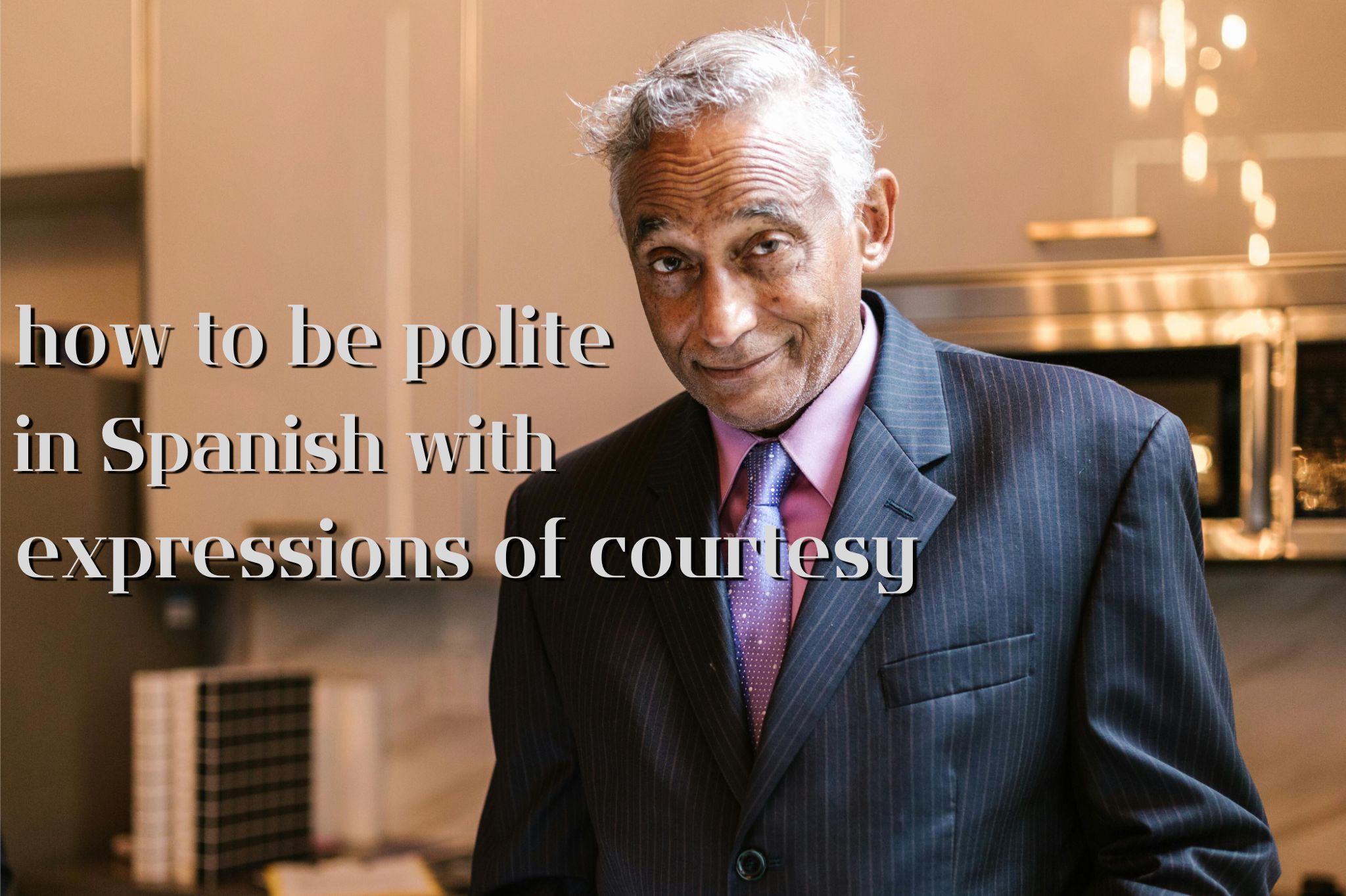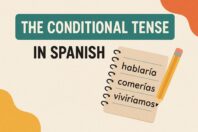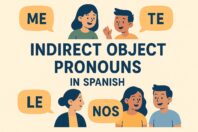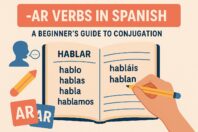Expressions of courtesy: How to be polite in Spanish

Get our free email course, Shortcut to Conversational.
Have conversations faster, understand people when they speak fast, and other tested tips to learn faster.
More infoOne of the most common challenges for Spanish learners is knowing the right vocabulary and expressions to be polite in Spanish. We are here to help our readers build conversational skills by providing common phrases that exhibit respect when talking to native Spanish speakers.
In this post, we will cover polite Spanish phrases that can serve in situations as varied as basic interactions to formal conversations. From understanding how to differentiate between tú and usted for you in Spanish, to greetings, asking for something, and expressing gratitude, the various words and formulations we’ll see here can help anyone to be more polite when speaking Spanish.
Now let’s get started!
“You” polite in Spanish
The first thing to recognize is that a significant part of being polite in Spanish is knowing how to properly address someone. Our different words for you can be confusing for English speakers, but understanding and using the appropriate Spanish you is a sign of respect and consideration.
In Spanish, when we address a single person as you, we need to choose the informal tú or the formal usted. Let’s see the main differences between them.
The main rule is that tú is the familiar or informal you, while usted is the formal Spanish you. We use tú when talking to friends, family, children, and peers, whereas we use usted when addressing elders, doctors, teachers, professionals, and often strangers. Think of tú as you informal, and usted as you polite in Spanish. We explain these rules more in our dedicated post on tú vs usted.
The way these two pronouns affect verb conjugation is another important detail. Tú has its own second-person singular conjugation, whereas usted takes the same conjugations as the third-person singular pronouns of él and ella.
But what about addressing a group as you in plural? In Latin America, we use the third-person plural pronoun ustedes regardless of formality. In Spain, however, there’s an informal second-person plural counterpart to tú, which is vosotros or vosotras. We go into a lot more detail on all of these in our post on every form of You in Spanish.
Courtesy titles in Spanish
Just as in English you use Mr. and Mrs. to show respect when addressing someone by name, or even Sir or Ma’am, we have similar courtesy titles in Spanish.
When greeting and addressing older men we use señor both as Sir and as a title to precede their name like Mr. in English. The equivalent for women is señora. When we address someone by their first name and want to be polite, we can precede their name by Don for men and Doña and for women.
- Good night, Mrs. Maria. – Buenas noches, Doña María.
- Good morning, Mr. José. – Buenos días, Señor José.
- Have a nice day, Mr. Juan. – Que tenga un buen día, Señor Juan.
- See you soon, Mrs. Patricia. – Hasta pronto, Señora Patricia.
For a full lesson on these and more, check out our post on Spanish titles and honorifics.
Polite greetings in Spanish
Greetings are an important part of everyday interactions. When you arrive somewhere or whenever you wish to greet somebody, the following expressions are the polite Spanish greetings you need to know.
| English greeting | Spanish greeting |
| Good morning | Buenos días |
| Good afternoon | Buenas tardes |
| Good evening | Buenas noches |
| Have a good night | Buenas noches |
We cover these and more in our post on Spanish greetings. For some informal alternatives, check out our post on how’s it going in Spanish. Now let’s see each of our polite greetings in a bit more detail.
Buenos días
Buenos días is fairly formal greeting, used anytime in the morning to be respectful with someone you don’t know.
Buenas tardes
Like buenos días, this polite expression is also used in formal situations. It’s the perfect phrase to use, for example, if you’re greeting someone in the office or arriving at an appointment. Buenos tardes is used anytime after noon, up until nightfall.
Buenas noches
Buenas noches is the formal greeting to be used at night. It can be used both as a greeting in the sense of good evening, and as a goodbye in the sense of have a good night.
Be careful with the literal translation of buenas noches though: before going to bed we have other expressions for saying good night in Spanish.
Polite expressions to say Goodbye in Spanish
Like in English, there are several ways to say goodbye in Spanish. Here we present the most polite ones.
| English | Spanish |
| See you later | Hasta luego |
| See you soon | Hasta pronto |
| Go well | Que le vaya bien |
| Have a good day | Que tenga un buen día |
For a broader variety, see our post on goodbye in Spanish. We also have a post with additional ways to say have a nice day in Spanish.
Hasta luego
Hasta luego is a polite way to say goodbye when leaving. Even though it’s translation is see you later, you can use it regardless of whether you’ll likely see the other person later or not.
Hasta pronto
Hasta pronto can be both formal and semi-formal, though it’s not really used that often. Although it translates as until soon, it’s used more in contexts where you actually won’t see the other person for quite a while, or even when you’re not even sure that you’ll see them the next time.
Que le vaya bien
Wishing someone well as we say goodbye in Spanish is a very common practice. Que le vaya bien is a good way to be polite when wishing someone to have a good trip, or perhaps to wish them good luck at a conference. This phrase uses the subjunctive ir conjugation, so its literal translation is essentially that you may go well.
Que tenga un buen día
Que tenga un buen día is another way to express politeness while saying goodbye and wishing someone well. Using the subjunctive and translating essentially as that you may have a good day, it is very useful when you want to end a conversation and take your leave of the other person.
How to ask for something in Spanish politely
If you want to ask for something politely in English, you can start your request with could I or may I rather than can I. This use of conditional verb forms and subjunctive verb forms is also used in Spanish to soften requests and ask for things more politely.
Let’s see the most common such verbs that we use to make polite requests in Spanish.
Podría
Poder is the Spanish word for to be able to, so in the simple present tense usted puede translates as you can (polite). Podría is the conditional usted conjugation of poder, so it’s the equivalent of you could in English.
We begin polite requests with podría in Spanish to say could you, while some translations are better when we think of it as may I have in Spanish, polite form.
- Could you tell me where the bathroom is? – ¿Podría decirme dónde está el baño?
- Could you tell me the time, please? – ¿Podría decirme la hora, por favor?
Me gustaría
You may be familiar with the Spanish verb gustar, which is frequently translated as to like. It’s used differently than most verbs, in that it’s generally just conjugated in the third person to match whatever is liked, while whoever is doing the liking is expressed with an indirect object pronoun.
Me gusta el queso, for example, meaning I like cheese, sees gustar conjugated to queso, while the first-person I in Spanish is expressed with the indirect object pronoun me. A better literal translation could therefore be cheese is pleasing to me.
So how do we use gustar in our Spanish expressions of courtesy? Just as we did with poder above, we conjugate gustar in the conditional tense to make polite requests. Me gustaría may be translated as I would like, while it may also take a translation more along the lines of … would be pleasing to me.
- I would like to know more about the contract. – Me gustaría saber más sobre el contrato.
- If it’s be possible, we would like a room with a balcony, please. – Si fuera posible, nos gustaría una habitación con balcón, por favor.
Quisiera
To say I want in Spanish, polite form, we start with the verb querer, which means to want. Rather than using the simple present of yo quiero, we conjugate querer in the imperfect subjunctive to get yo quisiera. Quisiera is usually translated in this context as I would like in Spanish, polite form, so it’s a very common formal option for how to ask for something in Spanish.
- I would like to eat in that restaurant. – Quisiera comer en ese restaurante.
- I would like to try the chicken tonight. – Quisiera probar el pollo esta noche.
- I would like to sit next to the window. – Quisiera sentarme al lado de la ventana.
Por favor
To make requests as politely as possible, be sure to include the simple phrase por favor, meaning please in Spanish. Por favor may be placed at the beginning or middle of a request, but using it at the end of a sentence is more common.
- Please, could you tell me the time? – Por favor, ¿podría decirme la hora?
- Could you tell me, please, the time? – ¿Podría decirme, por favor, la hora?
- Could you tell me the time, please? – ¿Podría decirme la hora, por favor?
How to express gratitude politely in Spanish
Gracias, meaning thank you, is the most common way to express gratitude among Spanish speakers. We also have several other phrases that are particularly used in formal contexts.
| English gratitude phrase | Spanish gratitude phrase |
| I appreciate it | Se lo agradezco |
| I am really thankful | Estoy muy agradecido/a |
| How kind of you! | ¡Qué amable de su parte! |
| I appreciate your assistance in this matter | Agradezco su ayuda en este asunto |
We have another post with many additional ways to say Thank You in Spanish. The ones we present here are among the most polite expressions in Spanish for expressing gratitude.
Se lo agradezco
When you don’t know the person you’re talking to very well, or you’re in a formal situation and want to express your gratitude, you can say se lo agradezco.
This phrase is built on the verb agradecer, which means to thank or to give thanks, along with lo, which is the third-person singular direct object pronoun for usted, and se, which is the indirect object pronoun meaning for it. The literal translation of this formal expression is therefore for it you I thank, or in normal English, I thank you for it.
Estoy muy agradecido/a
Estoy muy agradecido is a very neutral way to express how thankful you are for something. When it comes to formality, this is a common phrase used by Spanish speakers to say I am very thankful.
Let’s break this phrase down literally. Estoy is the yo conjugation of estar. Muy is an adverb of emphasis meaning much or very or really. Agradecido is the participle of the verb we saw above, agradecer, used here as a masculine adjective meaning thankful. When the speaker is a woman this adjective form needs to match her gender, so the expression becomes estoy muy agradecida.
Eso es muy amable de su parte
Eso es muy amable de su parte has a higher level of formality than our previous two phrases. You can use it when you want to recognize someone’s kindness. In Spanish, it is a polite way to say how kind of you or that is very kind of you.
- How kind of you! Thank you very much for your help. – ¡Eso es muy amable de su parte! Gracias por su ayuda.
- Did you buy that for me? How kind of you – ¿Compró eso para mí? Eso es muy amable de su parte.
Agradezco su ayuda en este asunto
Agradezco su ayuda en este asunto is one of the most formal ways to express gratitude in Spanish. Feel free to use this courteous Spanish phrase at the end of an email to give a more polite tone to the text, whether you’re writing to your boss or to a service provider.
The key verb here is the same one we saw above, agradecer. Literally, this phrase translates as I thank you for your help in this matter.
How to respond to gratitude politely
How do you respond when someone expresses gratitude? Let’s see a few polite responses.
| English response | Spanish response |
| My pleasure | Es un placer |
| At your service | A su orden |
| There’s nothing to thank | No hay nada que agradecer |
We have a full post with over a dozen different ways to say You’re Welcome in Spanish. The ones we’re presenting today are the most polite expressions of courtesy in Spanish for responding to gratitude.
Es un placer
If you like helping people, consider this option in formal situations. Es un placer is a short and easy-to-learn phrase that translates literally as it is a pleasure. It can also be used when meeting new people, with es un placer serving as an equivalent to nice to meet you.
A su orden
A su orden is a phrase that shows a sense of politeness and respect in Spanish culture. It’s a formal way of saying I’m at your service. You’ll hear this in shops or from customer service representatives after thanking them for their attention. When someone thanks you, responding with a su orden is a way to tell them that they can count on you.
No hay nada que agradecer
You can use this polite phrase to express to the other person that what you did wasn’t a big deal. Older people tend to use it frequently. It’s very suitable in formal contexts, so feel free to say it.
Comparable English expressions are it’s nothing or there’s nothing to thank me for. Still, no hay nada que agradecer is a much more formal alternative to the common de nada, which is the default expression for you’re welcome in Spanish whose literal translation is simply it’s nothing.
Conclusion: How to be polite in Spanish
In this post, we covered different expressions of courtesy for being polite in Spanish. We started off with the differences between tú and usted, explaining the importance of using the formal you in Spanish for politeness. We learned the polite Spanish equivalents to Mr. and Mrs.
In our next sections, we saw the most polite Spanish greetings and goodbyes to ensure polite encounters in everyday interactions. Then we learned polite ways how to ask for something in Spanish, looking at key verbs that we conjugate in the conditional or the subjunctive to create expressions of courtesy in Spanish. We rounded out the post with sections on polite ways to say thank you, and on how to respond to such gratitude with the best expressions of courtesy.
Mastering polite expressions in Spanish is essential for showing respect, consideration, and empathy towards others. Being polite in Spanish can serve as a bridge to connect with native speakers from different cultures and backgrounds, so by incorporating these expressions into your vocabulary, you can improve your conversations, feel more comfortable with the language, and interact better with Spanish speakers!



